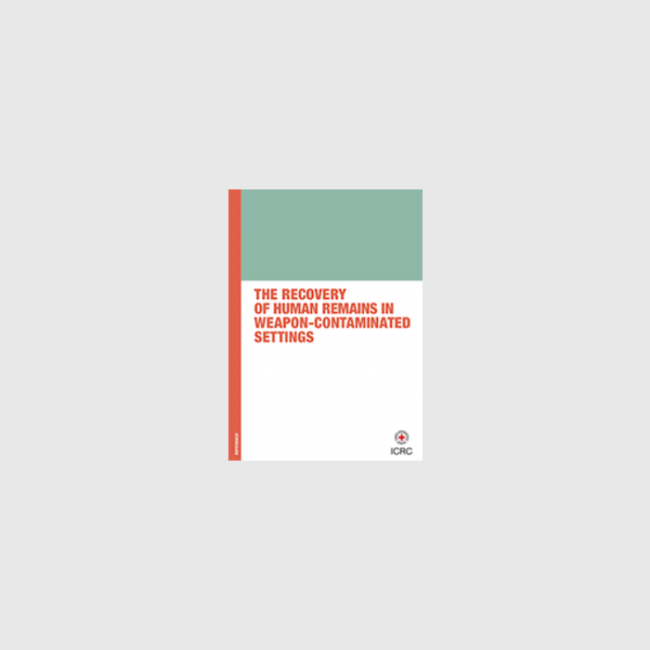
The recovery of human remains in weapon-contaminated settings
When operating in weapon-contaminated environments, forensic teams are often unaware of the explosive hazards that they might encounter or that may lie nearby. Likewise, mine-clearance and explosive ordnance disposal (EOD) specialists may be unaware of the legal requirements to treat human remains with respect and, as far as possible, to facilitate their recovery and identification. This guide therefore aims to bring together two very different disciplines – forensics and humanitarian mine action – in support of a common goal. When two communities of practice – each with its own vocabulary, principles and aims – are brought together in multidisciplinary teams, they cannot be expected to cooperate seamlessly without additional guidance. This guide therefore seeks to identify common operational principles and outcomes to foster a more collaborative approach between forensic and EOD teams in weapon-contaminated settings. This guide is for three groups of people: 1) forensic specialists who need to consider the risk of explosive hazards as part of a wider human-remains recovery operation, 2) mine action or EOD specialists who are likely to support, or who have been tasked to support, human-remains management activities 3) and staff with other expertise who are required to participate, or to oversee, multidisciplinary human-remains management operations. The guide is designed for use by ICRC and National Society staff, as well as in dialogue, training and other events with national authorities and external organizations.






